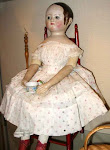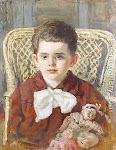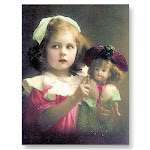
"The Twelve Days of Christmas" is an English Christmas carol that enumerates a series of increasingly grand gifts given on each of the twelve days of Christmas. Is a cumulative song, meaning that each verse is built on top of the previous verses.
There are twelve verses, each describing a gift given by "my true love". Although first published in England in 1780, textual evidence may indicate the song is French in origin.
Like other songs and art in general, the gifts in this song could have been chosen for symbolic reasons or possibly because they fit into the rhyme of the song. The twelve days of Christmas were a time of feasting.

People would visit their neighbors sharing and enjoying the traditional 'minced pye'. In this carol we see in the giving of gifts, references to food that would be included in the feasts and the courting that surely went on as the coming together of large groups of people, especially young and single men and women.

Serious feasting would have been the reserve of Royalty and the Gentry. A Tudor Christmas Pie was indeed a sight to behold but not one to be enjoyed by a vegetarian. The contents of this dish consisted of a Turkey stuffed with a goose stuffed with a chicken stuffed with a partridge stuffed with a pigeon. All of this was put in a pastry case, called a coffin and was served surrounded by jointed hare, small game birds and wild fowl.
*******************************************

And to wash it all down, a drink from the Wassail bowl. The word 'Wassail' derives from the Anglo-Saxon 'Waes-hael', meaning 'be whole' or 'be of good health'. The bowl, a large wooden container holding as much as a gallon of punch made of hot-ale, sugar, spices and apples. This punch to be shared with friends and neighbors. A crust of bread was placed at the bottom of the Wassail bowl and offered to the most important person in the room - hence today's toast as part of any drinking ceremony.

"The Twelve Days of Christmas"
*************************************
"The Meaning of the Stanzas"
My True Love Gave to Me – A Partridge in a Pear Tree


Why a partridge in pear tree? A partridge is not a small bird that can be easily placed in a cage in the kitchen… It is a game bird that would have been a popular main course during a festive gathering. Similarly, were the pears, a common fruit available for the feast, in fact the first seven verses of the song involve different types of fowl that would’ve been served during English Twelfth Night Celebrations.
My True Love Gave to Me – Two Turtle Doves
 Doves are a common symbol
Doves are a common symbol for love and peace. They were often kept in cages as pets during the Middle Ages and earlier.
The turtle dove is species that mates for life, so the giving of two turtle doves could be a way the lover is expressing his intention of love and marriage.
While the other six birds sung about in the first seven stanzas of this song probably ended up on the table as one of the meat courses, with these particular birds, and a pair at that, the lover probably intended them as a daily reminder of his desire to become a couple with his true love.
On the Third Day of Christmas...Three French Hens


The three French Hens probably refer to a variety of chicken from France.
In the period during which this carol developed there were three main varieties of chickens associated with France. The fact that they referred to a French rather than an English variety of chicken may be an indication that the carol originated in France.
Since chickens were a common domesticated fowl, unlike some of the other birds in the song, they would be readily available for an evening's feast. While game birds, like the partridge, would only be available on the menu if the day's hunt had been successful.
On the Fourth Day of Christmas...Four Calling Birds

 The verse, four calling birds
The verse, four calling birds, is actually a corruption of the English word colly or collie. So, we are referring to "four colly birds”.
In England a coal mine is called a colliery, and colly or collie is a derivation of this and means black like coal. For a long time in England, blackbirds have been referred to as both blackbirds and colly birds.
As to why the person in the song would give his true love a gift of blackbirds, the answer is that this would have been another gift of food. In times past in Great Britain, pies were a convenient way to serve and eat a meal with the meat, potatoes and any vegetables all cooked together in an easy to handle crust (forks not having been invented at that time, table utensils consisted of knives, spoons and one's fingers).
On the Fifth Day of Christmas...Five Golden Rings

 The five rings
The five rings in this stanza have, in singers' and illustrators' minds, changed from five ring-necked pheasants to five pieces of jewelry. While gold rings for one's fingers have been around since ancient times, the word ring, even today, has different meanings.
Old legends, popular in the Middle Ages, tell of Jason and the Argonauts bringing back golden birds. It didn't take long for people to conclude that the ring-necked pheasants were a sub-species of these golden birds. They were a prized bird and they had long been associated with the nobility.
So the five golden rings in this stanza refer to five ring-necked pheasants, a dish that was sure to be served at some of the king or queen's Twelfth Night feasts during the Twelve Days of Christmas celebrations.
On the Sixth Day of Christmas...Six Geese a-laying


"Lord Cobham and Family 1567"
 While geese were among
While geese were among the first animals to be domesticated, they were not, and still are not as common as chickens in barnyards.
The reason is that they are not as prolific as chickens in terms of egg laying. Geese only lay 30 to 50 eggs per year. It is thus interesting to note that our lover has given his true love six female geese that are currently laying eggs, thereby providing her with both a supply of eggs as well as the possibility of increasing her flock by allowing them to be fertilized and hatched.
Being larger than chickens, the eggs of geese are also larger than chicken eggs. Goose eggs are also very rich tasting and are good for making desserts.
So, here we are again, six days into the twelve day celebration and the focus remains on foods for the feasting.
On the Seventh Day of Christmas...Seven Swans A-Swimming


On the seventh day the lover sends seven swans... Throughout history swans have been associated with royalty and the swan is often used on royal symbols and other decorations. Swans are also found in myths and folk tales dealing with love.
Swan meat is supposed to be quite tasty and from ancient times to the nineteenth century, roast swan was on the menu for the king's Christmas dinner and other royal banquets.
With its close connection to royalty and royal holiday feasting, the choice of seven swans as a gift for this high born lady from her lover is appropriate.
On the Eighth Day of Christmas...Eight Maids A-Milking



The eight maids a-milking addresses two of the major themes of fifteenth and sixteenth century English celebrations and parties during the Christmas holidays – food and romance.
Until the advent of refrigeration, milk was not a common drink because it spoiled quickly. However, milk based products that did not spoil, such as cheese, sour milk (which is actually a cultured milk much like yogurt and is neither sour tasting nor spoiled) and custards were prized treats.
The maids, of course, refer to the women who would milk the cows to obtain the milk in the first place. However, the term maid is also the shortened form of maiden which is a young, unmarried, woman.
By combining the images of maiden and milk, it is easy to get the idea that this particular gift has more to do with sex and romance than with cows.
On the Ninth Day of Christmas...Nine Ladies Dancing


"Clapsaddle Ladies"

Degas "Dancers on Canvas"
The nine ladies dancing evokes images of music and dancing which were a big part of the celebrations at this period of history in England.
The term “ladies” probably refers to noble ladies as in a Lord and his Lady or a lady in waiting (high born ladies who waited on the queen at court – not servant women).
Another interpretation would be high born ladies dancing for the entertainment of the men much as people today will often provide impromptu entertainment at parties and other social gatherings.
Again, the emphasis is on celebrating and having fun during this nearly two weeks of non-stop nightly partying.
On the Tenth Day of Christmas...Ten Lords A-Leaping



The ten lords a-leaping most likely refers to leaping dancers (called Morris dancers) who performed leaping dances between courses at feasts.
Morris dancing itself was a popular form of folk dancing in the fifteenth and sixteenth centuries and possibly earlier. Both King Henry VIII and his daughter Queen Elizabeth I had professional Morris dance troupes perform as part of the entertainment at feasts.
Morris dancing declined following the English Civil Wars of the mid-seventeenth century which brought Oliver Cromwell and the Puritans to power with their dislike and banning of any type of frivolity such as singing and dancing.
The twentieth century brought a revival of the Morris and other folk dancing traditions in the UK and other parts of the world including the U.S.
Today there are local Morris dance troupes and competitions in the UK as well as other parts of the world.
On the Eleventh Day of Christmas...Eleven Pipers Piping



At the big feasts held during the holiday celebrations the guests were often entertained by musicians, dancers, jugglers, etc.
Bagpipes, while we usually associate them with Scotland, were also a common instrument in France as well. Since Queen Elizabeth I was succeeded by the Stuart kings of Scotland, bagpipes and other aspects of Scots culture were common among the upper classes in England as were elements of French culture due to intermarriage of the English and French nobility.
The pipers referred to in the song would be the professional bagpipe musicians hired to entertain the guests with their music and provide music for dancing.
On the Twelfth Day of Christmas...Twelve Drummers Drumming

 With the twelfth day
With the twelfth day we have reached the end of the song and have arrived at the last day of Christmas known as Twelfth Night on which the partying and feasting continued.
By the Middle Ages the drum, which was probably introduced to Europe from the Middle East by knights returning from the Crusades, had become a common instrument. In this case the drum was used to announce the serving of the next course of the feast.
*************************************
The song and the twelve day celebration have now come to an end. But it is not the end of the season. While the solstice has passed and the days are slowly beginning to lengthen again, winter still holds the land in its grip. The work of the peasant and noble is light as it is too early to begin planting, and with the cold and continuing short days, still remains an incentive to stay inside and party.

In conclusion, it must be remembered that this song evolved out of the popular culture of the Middle Ages and Tudor England. Various versions of it were sung for two or more centuries before the words were recorded and published. Despite the fact that the words have been preserved in written form for over two centuries, the song continues to evolve and the words and symbols continue to change. The one constant is that it remains a popular song and people continue to enjoy singing and listening to it.

...Merry Christmas to all, and to all a goodnight!

 People would visit their neighbors sharing and enjoying the traditional 'minced pye'. In this carol we see in the giving of gifts, references to food that would be included in the feasts and the courting that surely went on as the coming together of large groups of people, especially young and single men and women.
People would visit their neighbors sharing and enjoying the traditional 'minced pye'. In this carol we see in the giving of gifts, references to food that would be included in the feasts and the courting that surely went on as the coming together of large groups of people, especially young and single men and women. 



 Doves are a common symbol for love and peace. They were often kept in cages as pets during the Middle Ages and earlier.
Doves are a common symbol for love and peace. They were often kept in cages as pets during the Middle Ages and earlier. 


 The verse, four calling birds, is actually a corruption of the English word colly or collie. So, we are referring to "four colly birds”.
The verse, four calling birds, is actually a corruption of the English word colly or collie. So, we are referring to "four colly birds”.
 The five rings in this stanza have, in singers' and illustrators' minds, changed from five ring-necked pheasants to five pieces of jewelry. While gold rings for one's fingers have been around since ancient times, the word ring, even today, has different meanings.
The five rings in this stanza have, in singers' and illustrators' minds, changed from five ring-necked pheasants to five pieces of jewelry. While gold rings for one's fingers have been around since ancient times, the word ring, even today, has different meanings.
 "Lord Cobham and Family 1567"
"Lord Cobham and Family 1567" While geese were among the first animals to be domesticated, they were not, and still are not as common as chickens in barnyards.
While geese were among the first animals to be domesticated, they were not, and still are not as common as chickens in barnyards.












 With the twelfth day we have reached the end of the song and have arrived at the last day of Christmas known as Twelfth Night on which the partying and feasting continued.
With the twelfth day we have reached the end of the song and have arrived at the last day of Christmas known as Twelfth Night on which the partying and feasting continued.













































.jpg)




































































Goodness,such gorgeous pictures, as usual! Though I am sure all of what you have written here is true, the deeper, truer meanings of the words are based on Catholic religious terms. I believe the partridge was the priest or some such thing. Not being Catholic, I don't have all of them memorized, however, during King Henry's reign, the state religion was changed from Catholic to Protestant so the Catholics needed a Christmas song they could sing in "secret". The Twelve Days of Christmas was a way to teach their young ones about the "old" religion without being seen as breaking the law. Have a Merry Christmas!!!
ReplyDeleteThank you for this post, very interesting!
ReplyDeleteI loved that picture of A Partridge in a Pear Tree, the rabbits look so cute!
You are absolutely right, Heidi. I chose to post on the secular meaning of the song. But the meaning could be interpreted either way.
ReplyDeleteI do believe that festivities like these were held often during the Middle Ages, especially for celebrating weddings, and definitely Twelfth Night. But also to celebrate the gathering of a good harvest that will provide through out the long winter.
Thank you Josje for your sweet comment...I love that picture too.
ReplyDeleteSome things seem worth reviving, though perhaps with symbolic animals. There is a great humerous version of this I can't find at the moment. Great post.
ReplyDeleteThank you "Hermes"...Always a joy to hear from you. Hope you are doing ok...I love carols...This one in particular lends itself to fun when sang with a group of friends, it brings back fond memories of such reunions.
ReplyDeletehugs
Marta
Marta, I have always loved this song.... and being a lover of the Middle Ages.... I love your Post! Thank you for all your research! The only part I had not been aware of was the drummers signaling a change of courses! I love pageantry and symbolism! It doesn't always matter that we know exactly what is symbolized.... but we sense the deep old meanings are there! Thank you!
ReplyDeleteThank you "Day Dreamer". This carol represents Christmas for me as a time for family gatherings and comforting foods. I love the music as well, other favorite Medieval carol is Greensleeves....Best wishes for the season to you!
ReplyDeleteI luv this post it was to much fun. I enjoyed it a lot. Wishing you and your family a Happy Holiday and Happy New Year..........Julian
ReplyDelete